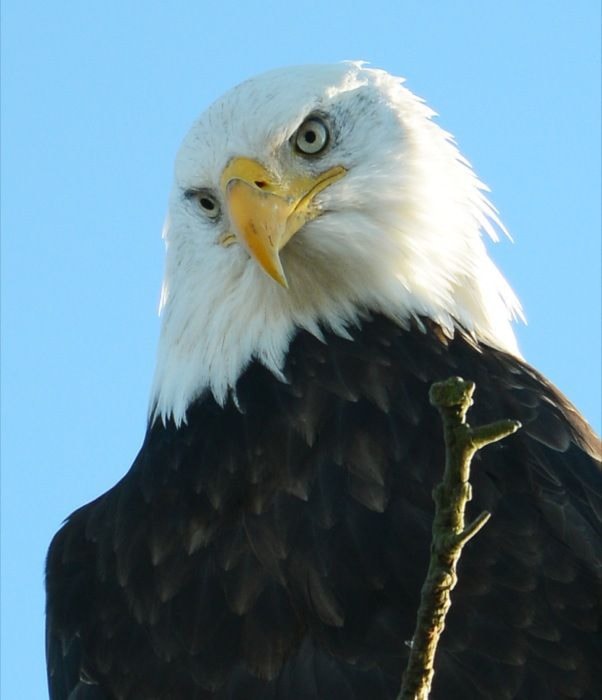Some gather on the tidal marshes around Boundary Bay, feeding on the tens of thousands of ducks and shorebirds that use the bay as a wintering area. Other eagles prefer the easy pickings at the Vancouver Landfill at Burns Bog or the compost heaps and farm fields along 72 Street.
The Christmas bird count held each year at the end of December regularly records between 600 and 1,300 bald eagles within a 24-kilometre radius of Ladner.
Yet, as longtime residents will remember, there was a time when there were very few eagles in the Fraser delta. Their numbers have steadily risen over the last four decades.
Christmas bird count data (viewable on the Audubon.org website) reveals that on average between 1958 and 1974, fewer than three eagles were observed on the single day, mid-winter count.
 Today, it is a common occurrence to see a dozen or more adult and juvenile eagles perched in a single tree.
Today, it is a common occurrence to see a dozen or more adult and juvenile eagles perched in a single tree.
The local population shift began in the 1980s, when average count numbers first rose to 76, then increased through the 1990s to 234.
Since 2006, the average tally on the Christmas bird count has soared to 936. Breeding numbers have also increased dramatically, and there are now more than 400-500 nesting pairs in the lower Fraser Valley.
Audubon and Bird Studies Canada partner in organizing Christmas bird counts, which began in 1900.
The information gathered by thousands of volunteer birdwatchers is very valuable in learning about North American birds.
While a single year’s data can be misleading, collectively the surveys can demonstrate population trends, such as the increases in Delta’s bald eagles and Anna’s hummingbirds (now a common garden bird, yet only observed on our local count since the mid-1980s).
Some other bird populations have declined.
The Ladner count is often first in Canada for high numbers of birds, with typically 140-152 different species, but in 2015 only 134 species were seen, with the cold, wet weather being a factor.
Other eagle counts are conducted at salmon spawning sites.
Last Fall, 1,400 bald eagles were recorded on the Chehalis River during the Fraser Valley Bald Eagle Festival.
In contrast, at Brackendale on the Squamish River, only 411 eagles were counted this January, compared with over 3,700 eagles back in 1994.
There are many complexities to the population dynamics of these majestic birds.
Anne Murray’s books on Delta’s natural and ecological history, A Nature Guide to Boundary Bay and Tracing Our Past, a Heritage Guide to Boundary Bay, are available in local stores or from natureguidesbc.com. She blogs at www.natureguidesbc.wordpress.com
